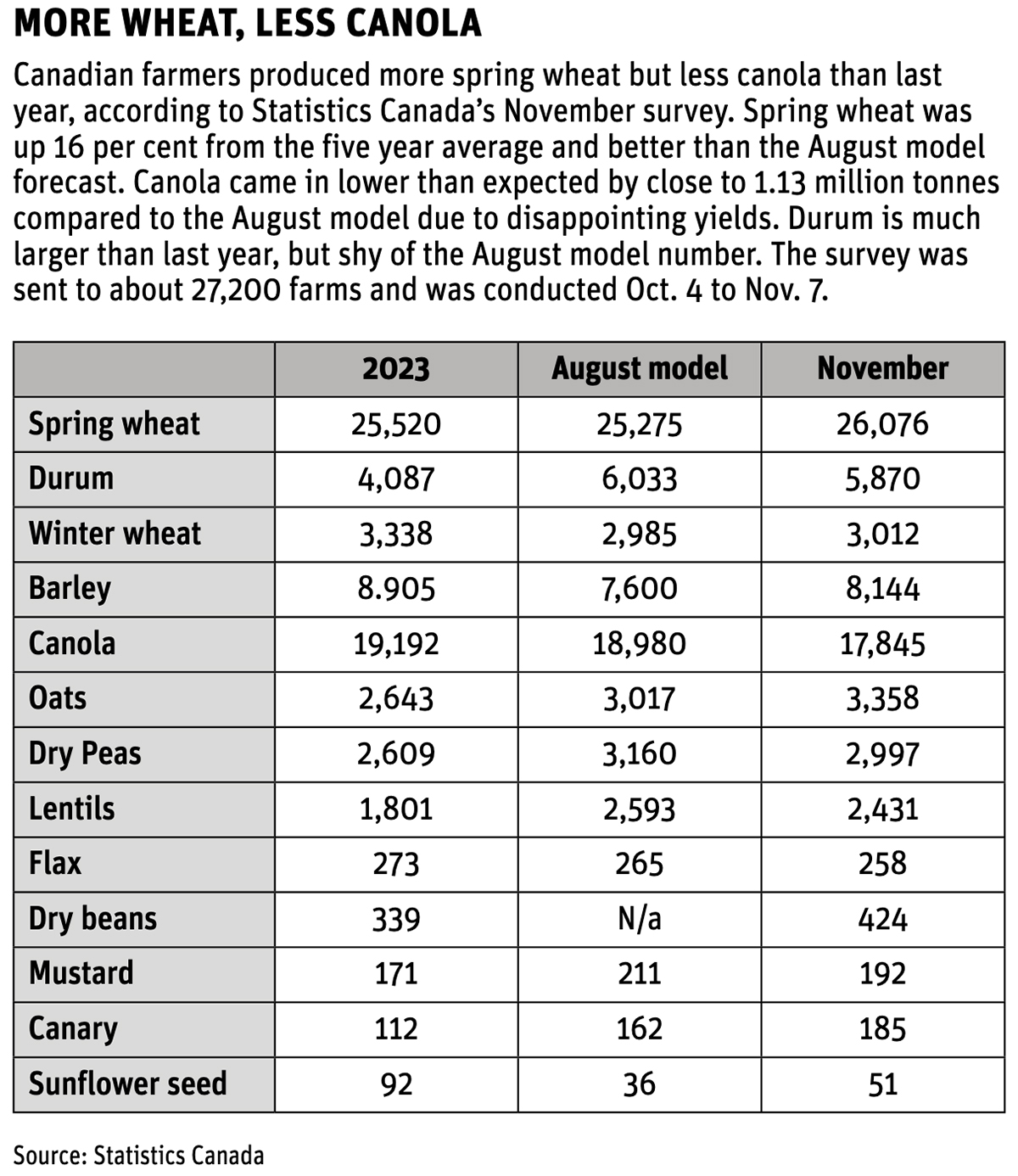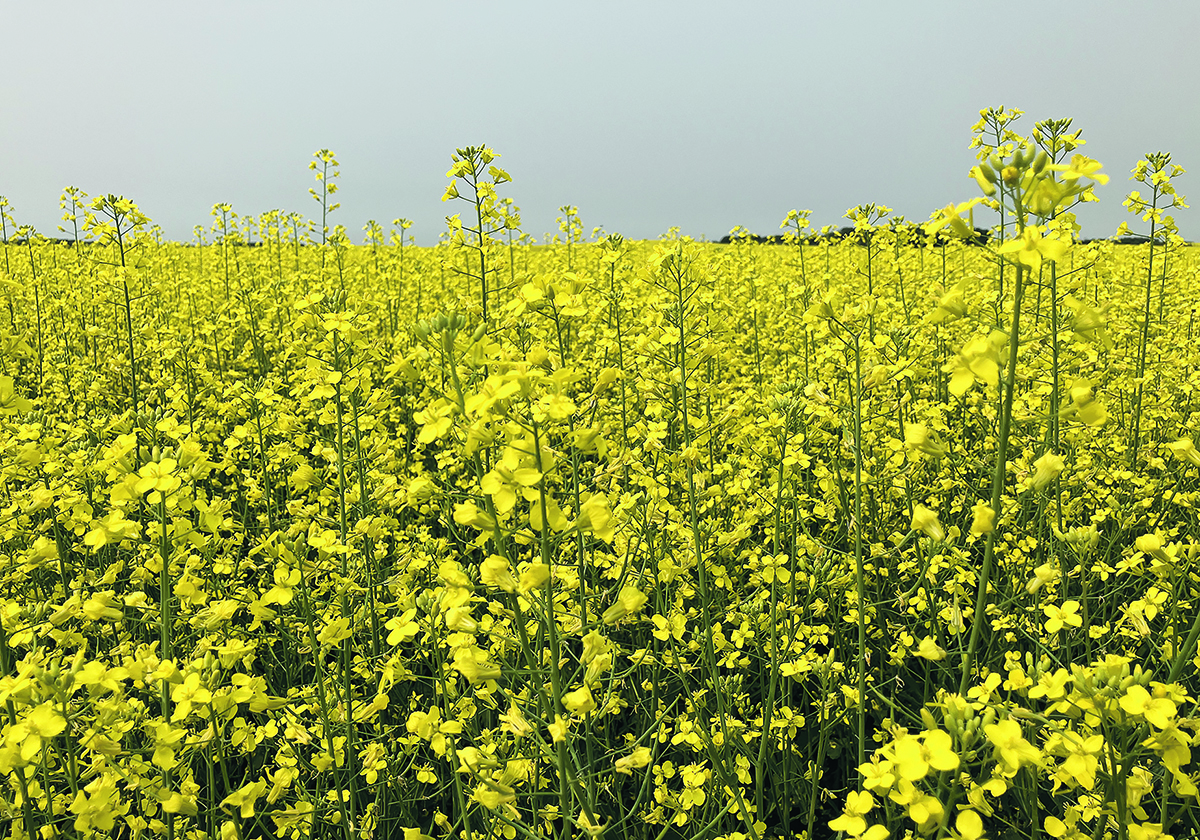A disappointing canola harvest is in the bin, judging by the November Statistics Canada crop survey released last week, setting up a potential supply squeeze later this crop year.
However, with the Chinese anti-dumping investigation hanging over the market as well as the many worries associated with the incoming Trump administration, it is impossible to make predictions.
The November production report issued Dec. 5 shows that spring wheat, barley and oats turned out better than forecast in StatCan’s August model-based report released in September, but the numbers for the grains likely won’t have a big impact on prices.
Read Also

Organic farmers urged to make better use of trade deals
Organic growers should be singing CUSMA’s praises, according to the Canadian Chamber of Commerce.
Canola, on the other hand, saw a sizeable decrease. At 17.85 million tonnes, it was down more than 1.1 million tonnes from the August model and down 1.35 million tonnes from last year’s crop.
This is the last report of the crop year, but the November number often under-states the actual crop size.
Every August as the crop year ends, StatCan tallies the amount of crop exported, processed or consumed domestically and the amount farmers and elevators say they still have in the bins and then makes a final revision to the production number.
In each of the past five years, the agency revised up its production number. The smallest increase was 381,000 tonnes and the largest was 1.65 million.
So, 17.85 million tonnes is not the final word on crop size, but it is the number we have.
Agriculture Canada issues a supply and demand report each month using the StatCan production number and its own forecast for demand.
Its report last month, using the old StatCan production estimate and its own conservative demand forecast, calculated year-end stocks at 2.2 million tonnes

Now, with a million tonne smaller crop, the end stocks will likely shrink to a tight 1.1 million tonnes.
The potential becomes more intriguing considering the booming exports and domestic use so far this crop year.
If the current pace were to continue, we would run out of product in the spring. The price would have to rise to ration demand.
There is already talk in the European Union that canola prices there will see price rationing because of the modest crop in the bloc and reduced supply of sunflower oil from Ukraine and Russia.
However, demand for Canadian canola is more uncertain than ever.
China might limit or totally block its purchases in the coming months.
And U.S. president elect Donald Trump is threatening a blanket 25 per cent tariff on Canada and Mexico. Also, all signs point to his administration cutting support for biofuel, meaning reduced demand from renewable diesel and sustainable aviation fuel producers.
The canola futures market has generally fallen since harvest, reflecting the crop’s uncertain demand, big supply of competing U.S. soybeans and the prospect for huge South American production.
On Dec. 5, the day the StatCan report was released, the January canola contract rose $12 a tonne, or 2.1 percent. On Dec. 6 it made further gains.
Turning to wheat, StatCan’s assessment of a big Canadian spring wheat crop got lost as the market focused more on reports that Russia’s winter wheat crop went into dormancy in poor condition.
Reuters reported: “Analysts from the ProZerno Centre, citing data from the state weather forecasting agency on Dec. 4, said over 37 per cent of winter crops are in poor condition or have not sprouted, compared with only four per cent last year, marking the worst level ever recorded.”
Only 31 per cent is in good condition and fields might have to be reseeded with spring wheat next year.
It is early to make predictions, but SovEcon has pencilled in a 2025 Russian wheat crop of 81.6 million tonnes, similar to this year’s so-so crop and much below production in 2023 and 2022.
Since October, spring wheat futures have fallen and most traders have a short position, betting it will fall more. They are focused on ample supply from Canada, the United States and Australia as well as current strong exports from Russia.
However, the Russian situation bears watching. Officials were already looking for ways to ration existing supply, and if next year’s crop is also threatened, then the export pipeline from the Black Sea might be reduced.















